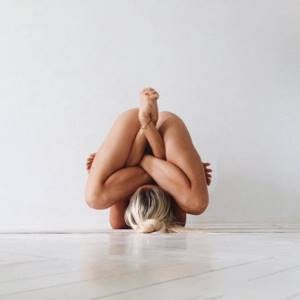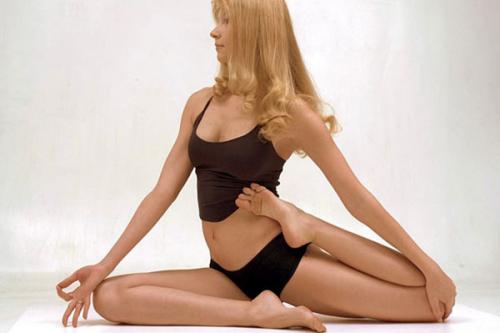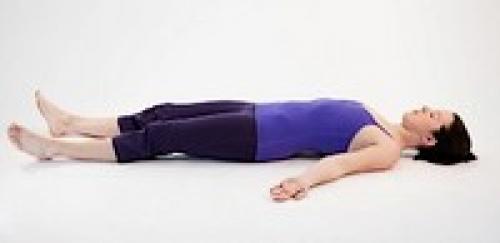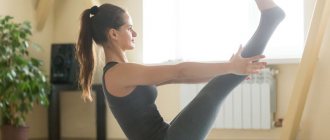How does yoga affect your figure? How yoga affects your figure
Yoga is an ancient healing system that teaches you to find harmony between mind, soul and body. It is a set of exercises that have a beneficial effect on a person’s mental state, his entire body and, as a result, his figure.
In the process of practicing yoga, a complex effect occurs on the entire body: the work of the central nervous system is stabilized, blood circulation and brain activity are improved. Thanks to yoga, the relief of the back becomes better, the spine is strengthened, which leads to improved proportions of the whole body and a more harmonious appearance.
Special exercises of this health system allow you to strengthen muscles, using those that a person did not even know about. The abdominal press is tightened, the diaphragm and pelvic floor muscles are strengthened. All yoga movements are clearly adjusted, which allows you to achieve maximum effect without harm to the body. Thanks to individual exercises, you can also work not only on the whole body, but also on problem areas, strengthening and tightening them.
Yoga also fights excess kilograms, eliminating the causes of their appearance. The latter include stress, sedentary lifestyle, depression and emotional stress. Constantly being in this state often causes an imaginary feeling of hunger and leads to overeating. Yoga stabilizes a person’s state of mind, adds inner strength, energy and tranquility. The muscles become more elastic and pumped up, the spine straightens, and excess weight, which interferes with a healthy lifestyle, gradually disappears.
Such reasons, by the way, can lead not only to obesity, but also to exhaustion of the body. During yoga, the body becomes not thin, but slim and strong. The positive emotional state that yoga gives is gradually reflected on the body - it becomes more fit, healthy and beautiful. A person who has been practicing yoga for a long time looks slim, strong and much younger than his age.
Mental benefits
Yoga is one of the most effective ways to know yourself. With each subsequent lesson, more new opportunities open up for a person. It has a beneficial effect on the nervous system, helps to put thoughts in order, organize actions, and also:
- Increases self-confidence
- Helps achieve spiritual balance
- Develops concentration and thinking power of the mind
- Gives cheerfulness and uplifting mood
- Helps cope with stress and nervous tension
- Frees you from anxious and negative thoughts
- Classes in a group give you a feeling of calm and support from others.
And most importantly, yoga teaches every person to hear their body. Try to find the right direction for yourself among the variety of types. Develop not only your physical, but also your spiritual state, and you will notice how life takes on new colors.
Ashtanga yoga for figure. What is Ashtanga Yoga
Ashtanga yoga refers to a complex, complex discipline consisting of a large number of exercises, consisting of 8 parts and allowing you to achieve spiritual and physical development. The new school of Pattabha Jois is an offshoot of static hatha yoga. Spiritual perfection (samadhi) is achieved in a state of satisfaction and the concept that everything is one - what God created, all living things, nature and the world. A special modern system is barbell-vinyasa yoga, which combines dynamic complexes and breathing techniques. One asana is successively and quickly replaced by another, forming a complex accompanied by correct breathing (pranayama), energy locks (bandhas) and concentrating the gaze on one of the 8 points (drishti).
Vinyasa yoga is a rigorous practice that requires considerable strength, stretching and flexibility. Any lesson begins with the Sun Salutation complex (“Surya Namaskar”), consisting of a dozen poses. Classes are accompanied by the chanting of mantras. Founded in 1964 by Pattabhi Jois, this school still lives on in the Mysore Institute. The main idea of Ashtanga Vinyasa is to shift the emphasis from posture to breathing. With this comes an awareness of poses as temporary and fleeting forms.
Do yoga make you lose weight? Will yoga help you lose weight?
Yoga classes are, first of all, work on yourself, on your mind and body. Special exercises allow you to get rid of imbalances and bring your body and spirit into a state of harmony. Accordingly, if a person becomes the master of various systems of his body (musculoskeletal, respiratory), he begins to lose weight. It is muscle relaxation in combination with static loads during yoga that gives the effect. But do not forget that yoga is not a sport and certainly not a diet. This is a spiritual teaching, a way of life. And this practice needs to be done regularly.
In addition, you should eliminate bad habits, if you have any. No smoking or alcohol.
There are different types of yoga. One of the most popular is hatha yoga. It is complex respiratory and physical. Don't worry if things don't work out for you at first. After all, the body also needs time to adapt to breathing slowly. The main thing is to learn to relax through breathing. Hatha yoga includes exercises that directly help you lose weight. For example, uttanasana is an intense stretching pose that removes fat from the waist, improves the functioning of the gastrointestinal tract, and strengthens the upper legs. Chaturanga Dandasana, or staff pose, tones the abs and improves.
If you start doing yoga, you can also add running or race walking to your exercises. This will greatly increase the weight loss effect.
Also in yoga there are entire systems of exercises for weight loss. For example, some Ashtanga Vinyasa Yoga asanas. The exercises are based on six sets of asanas, which gradually become more complex. The first set consists of 90 exercises. Each asana is done for about 30 seconds, then gradually increase the time to two minutes. This type of yoga is considered very dynamic. Its peculiarity is that the exercises smoothly flow into one another. Of course, it is advisable that an experienced yoga specialist work with you. Another advantage of this method of losing weight is that after performing breathing and (or) physical exercises, appetite decreases. By the way, people who seriously practice yoga often adhere to a healthy, balanced diet. Your body will only thank you for this.
Warm up first
Before training, it is recommended to do a warm-up or light cardio exercise. With a proper warm-up, your body temperature should increase by several degrees. If you do not prepare the muscles, a tear or sprain may occur.

Don't try to tie yourself in a knot right away. Master simpler asanas first. One of the main principles of yoga is non-violence. Every movement should bring you pleasure. Don't let the pain
It is especially important to warm up before mastering the bridge, lotus pose or various splits.
Warming up helps relieve tension in the neck and lower back, which improves blood flow, relieves tension and normalizes breathing. It also allows you to warm up your muscles and psychologically prepare yourself for more complex exercises.
Each exercise should be performed at a slow pace: entering, fixing the pose and returning to the original position. You need to eat several hours before training so that the food has time to be digested and does not damage the internal organs. During practice, you can drink water if necessary.
The warming up complex consists of the following exercises:
- In a standing position, the head tilts towards the right shoulder. At the same time, the right hand is raised up and the palm is placed on the left side of the head. The head should be slightly pulled towards the shoulder. The position is fixed for 20 seconds. Then similar movements are performed in the other direction. A total of five times in each direction for 10–15 seconds.
- Standing straight, raise your arms straight up and clasp your hands above your head. Lean to the right for 20 seconds, and then to the other side.
- Place your feet shoulder-width apart. The left leg bends at the knee. The emphasis of the leg is transferred to the toe. Place your left hand on your knee and hold the pose for a few seconds.
- From a standing position, raise your arms up. Then you need to lean forward and touch the floor with your hands. Attention is concentrated on the lower back. You need to stay in this position for 30 seconds.
- Your legs should be spread as wide as possible, and then your hands should be placed on the floor. You should remain in this position for 30 seconds.
- While doing the exercises, you need to monitor your breathing. Bends are performed while exhaling, and lifting while inhaling.
If you choose your own apartment for practicing, make sure that there are no drafts in the room. Let nothing distract you from practice. Turn off your phone and unnecessary lights. You can turn on soothing music and light incense sticks. Do not practice in a cold room. So there is a risk of injuring something. Muscles love warmth
Advice! An important component of yoga practice is continuity and regularity of training. It is better to study for 20 minutes every day than to study for several hours once a week.
Yoga, how it affects your figure. The effect of yoga on weight loss and figure

Among most people, there is an opinion that yoga is good for health, but not for weight loss, because only 150 kcal are consumed per hour of practice. But all the mistrust in yoga as a practice for losing weight begins to dissipate as soon as its classes become systematic.
There are different types of yoga, but in general they are all similar and have a very positive effect on weight loss. Excess weight appears as a result of three factors, and yoga will help cope with all three: it burns calories through intense physical activity, has a beneficial effect on metabolism and promotes the transition to proper nutrition.
During yoga classes, a person learns to breathe correctly, and this helps the body to be fully saturated with oxygen, which helps speed up metabolism.
Yoga classes activate the work of all muscle groups, especially the gluteal muscle, and after a few months you can see a positive result.
Excess weight begins to disappear, and muscle mass begins to increase. The readings on the scales in this case mean nothing at all, and this will be noticeable in the size of the clothes. But if you don’t really want intense muscle growth, then you can reduce the level of strength loads and place more emphasis on stretching, then the muscles become more prominent, and fat disappears from problem areas.
It is also surprising that after some time, interest in unhealthy and fatty foods disappears by itself, and this will serve as a big step towards losing weight.
For each specific case, you need to choose certain exercises, it depends on where the fat is most stored. For example, most women complain that their sides and stomach are considered the most problematic areas. In order to influence these areas, there are certain static movements in which the abdominal muscles are maximally involved. They all have fancy names, but in practice they look pretty self-explanatory. Of course, at first the muscles will simply burn from tension, and it will not be possible to hold on to one position for a long time, but yoga requires regular practice, and then the results will not be long in coming.
Diet is an important addition to yoga. And the main thing is to understand that here we are not talking about a hunger strike, but about proper and balanced nutrition. To do this, you just need to choose for yourself which foods to choose for your diet: it could be vegetables and fruits, or it could be a protein diet. The main thing is to avoid eating fatty, sweet, starchy foods and preferably add less salt to your food.
Benefits of Yoga
Yoga is a technique of spiritual improvement and development. Hatha yoga is aimed at developing the physical body. The asanas included in this system have existed for millennia. They are effective in achieving better levels of health and solving appearance problems.
No type of physical education will help you work out your whole body as much as yoga. Asanas in yoga are aimed at comprehensively working out even the deepest muscles. Practice also helps to establish metabolic processes in the body
Other types of physical education do not allow you to work out the body as thoroughly as yoga, which helps to establish metabolic processes in the body, as well as get rid of muscle tension and restore the full functioning of the spine, respiratory and digestive systems.
Asanas in combination with breathing exercises represent a massage of the internal organs and training of all muscle groups.
Muscle tension occurs after stressful situations. At the same time, old grievances, experiences and shocks form into a muscular shell. Yoga gradually allows you to destroy this shell and restores full muscle function.
In addition, systematic exercise promotes concentration and also helps develop willpower and perseverance. After two weeks of regular exercise, you can get rid of back pain.
Doing yoga with the whole family is not only useful, but also fun. Practice will help get rid of muscle tension and restore full function of the spine, respiratory and digestive systems. Asanas in combination with breathing exercises represent a massage of the internal organs and training of all muscle groups.
Advice! Yoga also implies a unique lifestyle and proper nutrition. For example, the habit of drinking water in the morning is beneficial. For better bowel function, you can add a little lemon juice. If you add ginger, you can get a better boost of energy than after coffee.
Feelings after yoga. What to Do After Yoga Classes?
This is not a very often discussed topic, but it is nevertheless important: what to do after yoga? This means immediately after classes, as well as the next few hours. Moreover, the general principles here do not depend on whether you attend hatha yoga classes in a group or gym, or whether you have your own yoga classes at home. It also doesn't depend much on the style of yoga you practice.
Why is what you do immediately after class important? Because at this time there is a redistribution of energy by the body, accumulated and spent during practice, as well as general harmonization of the body and preparation for further activities. What you do after yoga will affect the quality of your body's absorption of the information and energy gained during the practice.

1. Don't rush! You shouldn’t immediately jump up after your practice and run about your business. Lie down longer in shavasana, let your body “inhale” all the benefits of yoga practice, and absorb everything gained in the process. Remember that a good savasana at the end will almost double the overall benefits of yoga! This happens because in shavasana you learn to turn off your consciousness and leave the body to its own devices. In general, ideally, this should happen during the practice itself, but at least you can do it in shavasana. So, your body, being freed from the dictates of the mind, begins intensive work on self-healing and creating internal balance. A similar thing happens in a dream, but after yoga this process can be much more effective.
But not only the body benefits, but also you yourself - your consciousness moves away from the constant flow of thoughts and images, and thus you gain rare abilities to perceive reality more deeply, resist stress, and be happier regardless of the circumstances. None of this is easy, but it is worth it, so take savasana very seriously at the end of your asana cycle.
2. Water! There are different styles of yoga, some of them are quite intense (Ashtanga Vinyasa, Bikram yoga), however, no matter what style you practice, be sure to replenish the fluid lost during classes. Clean, raw water is best for this. Don't drink any junk in the form of popular drinks; water is the best option for replenishing fluid loss in the body, because... it does not require special processing to be absorbed.
3. Sweat! Sweating is unpleasant (in general), but very beneficial for the body. Again, some styles of yoga will require you to sweat quite a bit. There are recommendations to rub your body with your sweat to avoid loss of nutrients and maintain an energy boost from the practice. Although I myself prefer to take a shower after class, I still don’t do it right away. Why? Firstly, so as not to “discharge” the body with water. Secondly, this sweat does seem to have some benefits for the skin. Thirdly, you need to take a shower under water at room temperature; contrasting options worked poorly for me immediately after practice.
4. Skin! Our skin can react differently to sweat, so if you feel that your skin is irritated, then use moisturizing creams or lotions, preferably made from natural ingredients. By the way, after practice, the skin will be more receptive to all sorts of nourishing things, so skin care creams may work better than usual.
5. Feelings! Yes, exactly the sensations. Correct yoga practice brings very positive feelings: lightness, energy, high spirits. Keep these sensations, cultivate them. Why is it important? The fact is that on a subtle psychological level, our actions are almost always associated with a certain set of emotions, which can later affect our behavior in a similar situation. By managing our feelings and cultivating certain associations, we can not only predict our (and others’) behavior and attitude, but also get rid of unwanted habits. Also, with practice, we will be able to “attract” into our lives those situations in which we would like to find ourselves, and avoid undesirable ones. But this only comes with practice. Now try to remember these points, which can be used both in individual yoga classes and in group ones.

Hatha yoga: where to start
Before moving directly to the practice itself, it is necessary to at least briefly familiarize yourself with the theory of hatha yoga and its basic principles. Hatha yoga views a person as a special energy structure, represented by 13 main channels that fill completely different types of energy.
Hence the goal of this type of yoga is to manage your energy and, accordingly, to improve your life qualitatively. The main components of classical hatha yoga:
- asana – a special position of the body;
- pranayama – a set of breathing exercises;
- meditation practice.
For a beginner yoga practitioner, it is very important to understand that yoga is not just a system of physical exercises, hatha yoga is a combination of the physical and spiritual, which allows you to qualitatively change your physical and mental health, and life in general.
Having carefully studied the description of hatha yoga in theory, do not rush to move on to practice; it is better to familiarize yourself in more detail with contraindications for classes, recommendations for daily routine and nutrition. And only then can you move on to the next stage of preparation - choosing the right place for yoga in your own apartment, if classes in the studio for some reason are not suitable for you.
For those who have decided to master the yoga technique for the first time, it is important to understand the dangers of the practice, in the event that, out of ignorance, the body is not properly prepared for asanas, or health indications are not taken into account. For this reason, it is recommended to take the first few classes with an instructor who will select an individual yoga program.
Who is yoga suitable for and what do beginners need to know?
Anyone who is ready to study its theory and poses can practice it. Some types require vigorous physical activity that not everyone can do, so it's important to choose a style that's right for you. It is important for beginners to know the basic theory in order to do everything correctly.
You should approach classes consciously, with full readiness to work and learn the theory. You shouldn’t skip classes, every workout is learning a new element, without perfected knowledge it will be difficult to proceed to the next level
.
Yoga is not recommended if you have the following:
- Mental disorders;
- Spinal injuries or joint diseases;
- Diseases of internal organs;
- For oncology;
- Presence of hernias;
- high blood pressure or heart disease;
- Colds and high fever;
- The first days of menstruation;
- Pregnancy is more than three months old.
Exercise on an empty stomach or a few hours after eating. Wear comfortable clothes made from natural fabrics. It is not recommended to perform asanas after playing sports, or immediately before bed. Don't risk straining muscles and ligaments or catching a cold by exercising in the cold.










